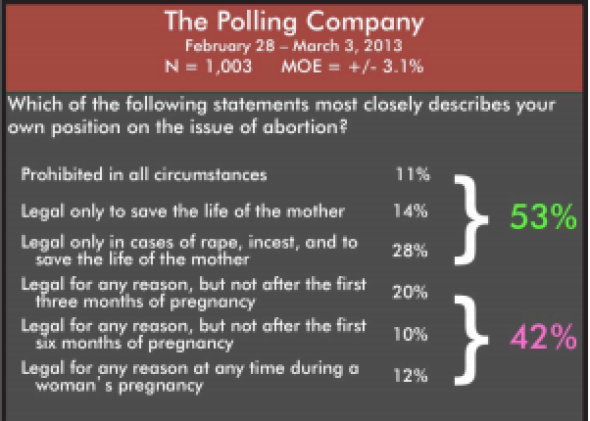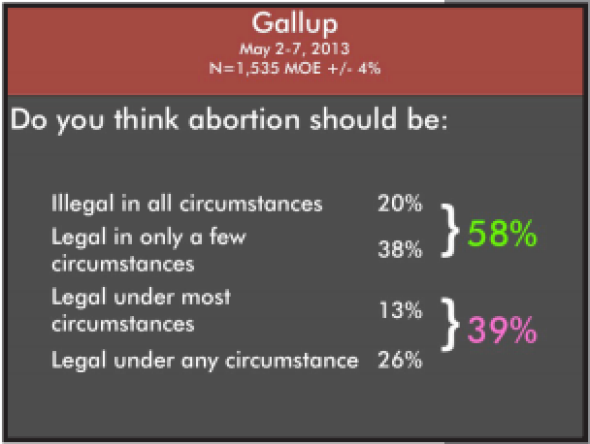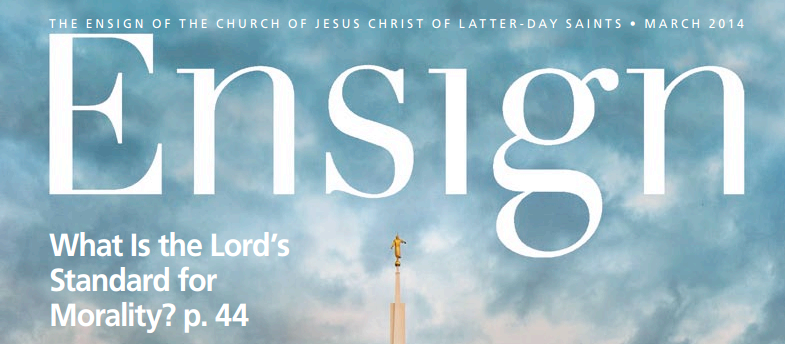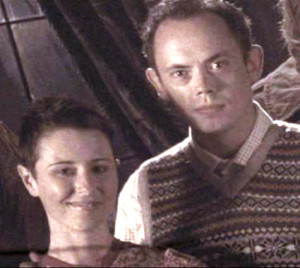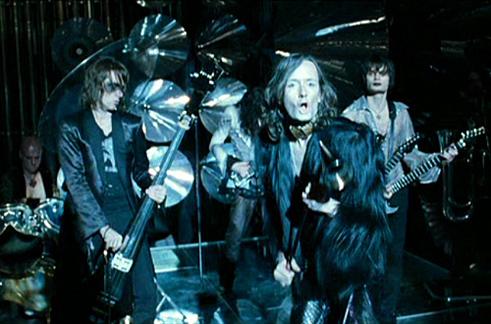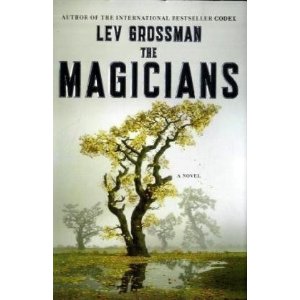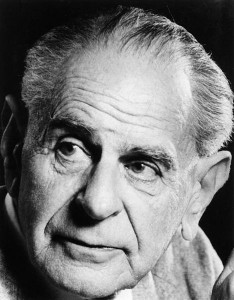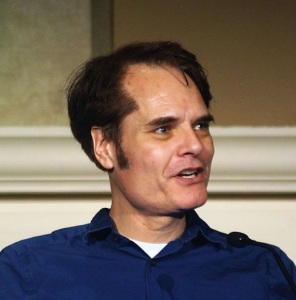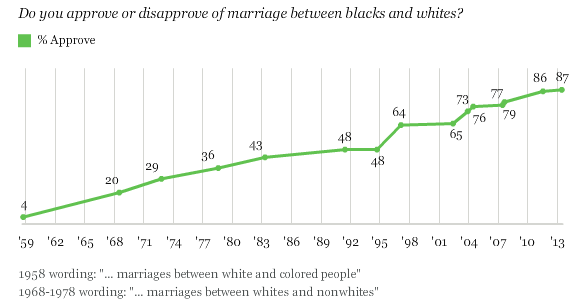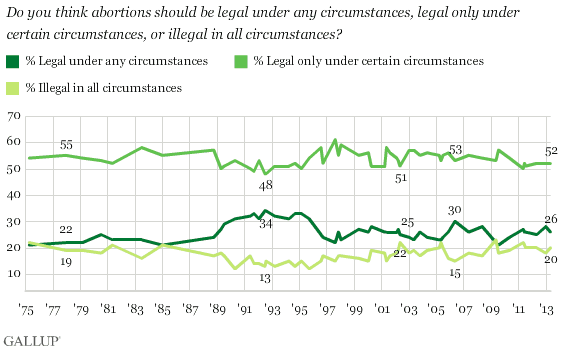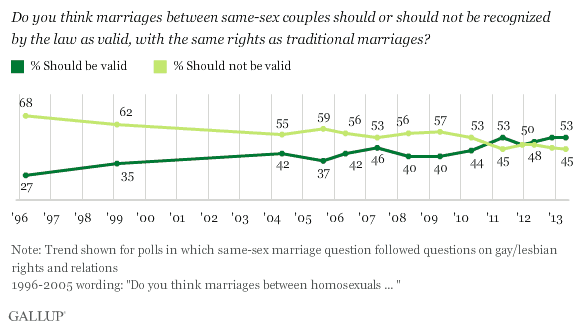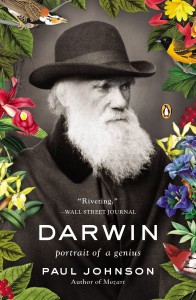Priesthood and Ministry
There appear to be at least three principle positions with regard to women and male priesthood. Most Latter-day Saint women support the status quo. The latest Pew Study “finds little support for the notion that women should be eligible for the Mormon priesthood. Only one in ten Mormons (11%) believe that women should be ordained to the priesthood of their church, whereas 87% think the priesthood should be open only to males. Large majorities of both men and women express this view.” Surprisingly, perhaps, “women [are] somewhat more likely than men to say the priesthood should be open only to males (90% vs. 84%).”
Nine in ten women, in other words, do not wish to see the male priesthood shared by both genders. However, recently a minority of women have recently garnered headlines for their efforts to move the church leadership to make ordination to the priesthood available to all worthy members, including women.
Presumably, a third group would consist of those who are undecided; who, when questioned, indicate a predisposition to support or oppose the present policy, but with reservations. My remarks are directed to all three constituencies. I want to express my solidarity with those who find present practice to be in harmony with the Lord’s will, and a cause for celebration rather than lament. I want to suggest to those who agitate for change that, while I respect their choice, there may be alternatives to the stark deprivation vs. equality rhetoric than sometimes accompanies their world-view. And I hope most of all to encourage the undecided of the middle ground to consider more nuanced ways of thinking about ministry in the kingdom, the priesthood, and Relief Society that can, hopefully, move us all in the direction of a more unified Zion community.
Ministering vs. administering
It is important at the outset to clarify what I have in mind in talking about priesthood. Jesus Christ was and is the Great High Priest. His exemplification of priestly conduct was three-fold: a lifetime of service to the marginalized, the vulnerable, and the solitary individual; a paradigmatic enactment of meek and selfless devotion to serving rather than supervising (when He washed his disciples feet); and His culminating self-effacing gesture whereby, in Bonhöffer’s words, He drew men to Him through his weakness rather than strength, his surrender rather than triumph (His sacrificial death). The world equates greatness with mastery, success with power, and status with hierarchy. But priesthood is rightly predicated on a model that turns worldly paradigms upside down. If this radical model was largely lost to the Christian tradition, Joseph restored it in section 121. Priesthood is there emphatically, unambiguously, and dramatically severed—completely dissociated—from contemporary versions of power structures. “No power or influence, can or ought to be maintained, by virtue of the priesthood.” In other words, any seeking for priesthood—by men or women—who are even partially motivated or inspired by a desire for influence or control, is anathema to the spirit of Christ. This is not reading between the lines. This is the clear and explicit warning that is this section’s essence. (Note that when Abraham sought the Priesthood, it was to become “a greater follower of righteousness”. He was not seeking for power.[ref]Abraham 1:2[/ref]
In Mormonism, culture often insinuates itself into the church in corrosive ways. Mormons too often talk of “priesthood advancement,” aspiring missionaries aim to be APs, as later in life they plot their rise to the office of GA. The Lord seems to indicate that most Mormons will fail the test of purity in priesthood service. “It is the nature and disposition of almost all men, as soon as they get a little power, as they suppose, that they immediately begin to exercise unrighteous dominion.” “Almost all” fail the test. All too often priesthood is equated with influence, control, status, power, honor, or visibility. And people seek priesthood for the power it gives them to administer, rather than to minister. Those may all be reasonable motives, and in the political world at large, equal access to the corridors of power and influence is a fine agenda. I am simply asserting that the Lord has pleaded with His people not to apply the standards and aspirations of the world to service in His kingdom, because His kingdom is to be constituted differently, with an agenda the world cannot understand or appreciate.
Because D&C 121 reads: “it is in the nature and disposition of almost all men” to abuse power one might speculate that priesthood is given to men to foster an inclination to service for which they are not naturally inclined. And, indeed, LDS women by and large leave men digesting dust when it comes to ministering to the Lord’s family. We had dinner with an LDS couple last night. In answer to a casual question, the wife summarized some of her activities, with one child still at home and another at university. Beth works as a CASA (Court Appointed Special Advocate) for Henrico County. [ref]”The National CASA Association, together with its state and local members, supports and promotes court-appointed volunteer advocacy for abused and neglected children so that they can thrive in safe, permanent homes.” CASAForChildren.org[/ref] She also volunteers at a Title 1 elementary school in the City of Richmond as a mentor, Reader’s Cafe Discussion Leader, and “Room Mom” for a 4th grade classroom. In addition, Beth has lunch with a group of four 4th grade girls once a week during lunch where they read a book and discuss it. She also organizes the holiday parties for a 4th grade teacher. (Beth herself has no children at this school). She learned of this opportunity to serve these children through a friend who belonged to the Jewish Community Federation of Richmond, which Beth was required to join in order to volunteer in this capacity.
Beth’s involved and time-consuming service is not atypical. The following is an email that was recently sent by my ward Relief Society President:
“Dear Sisters, I want to thank you so very much for so willingly signing up to help care for Alice[ref]not her real name[/ref] [who is not a member of our church]. You all did a remarkable job over the past 3 months of taking meals to her, helping feed her, doing the dishes, sweeping the floor, changing her diaper, rubbing lotion on her back and legs, sorting through her bills and just visiting with her and being her friend. I know she appreciated all of you. And the Lord is pleased with our service. You are a wonderful group of ladies that I am privileged to call my Relief Society sisters. The next door neighbor, Jennifer[ref]not her real name[/ref] is recovered from her knee surgery and assumed care of Alice on Sunday. Even though we are not running a RS schedule to care for her, you can stop by and visit or take a meal anytime you just want to. The Relief Society Presidency will continue to give her a bath periodically. Thanks again for your love and kindness towards each other.
Pam
Please let me be clear about what I am, and am not saying. I am not saying that women have enough to do making quilts for orphaned babies, so let the men get on with running the church. Neither am I saying that women are incapable of abusing power. I am saying that the discrepancy between men’s ways of serving and administering, and women’s ways of ministering and administering, deserves to be examined in terms other than exclusion and deprivation. With the progressive organization of the church, the democratization of the male priesthood became more hierarchically driven. What began early on as a virtual priesthood of all (male) believers, became increasingly ordered into quorums, and then into quorums situated in a hierarchy. To this day, men talk of priesthood lines of authority, file leaders, stewardships and keys. The incredible detail and orderliness and structure of male priesthood is one of its strengths—but it comes at a cost. Male priesthood lines of authority are great in communicating and addressing critical needs for disaster relief when they occur. However, the corporate nature of priesthood administration has a tendency to stifle initiative, consume one’s time, distract from the work of ministry proper, and instill jealousy, covetousness, and unrighteous dominion. The Lord counters the predilection to priesthood abuse by encouraging men (and women) to be agents unto themselves, to take righteousness in their hands, not to wait to be commanded in all things, not to let the weightier matters be overwhelmed by the minutiae, to serve with purity of heart, and not to aspire to the honors of men.
It seems to me that disburdened of the hierarchical structure of male priesthood women are more easily able to take righteousness into their own hands when it comes to ministering in the kingdom. What the examples of my friend and Relief Society President suggest to me, is not a gender on the peripheries doing the inconsequential. As these two sisters powerfully illustrate—women are free to work and serve without restraint or confinement, without the distractions of status or the straightjacket of supervision, seeking service rather than approval, discipleship in a horizontal sisterhood rather than advancement in a pecking order. In my mind’s eye, I see male priesthood holders as all too often imprisoned in an Eiffel Tower of “return and report” up and down a priesthood chain; myself and my sisters I see as ranging freely over a large and spacious field, like the Savior, going about and doing good, without being instructed as to where to do that good, as agents unto ourselves. This is also the key to understanding, as far as I can see, the other Pew finding: “The belief that women should be ordained to the [male] priesthood is less common among those who exhibit the highest levels of religious commitment than among those with lower levels of commitment.” When I asked a number of stake and ward relief society presidents as well as other very engaged Mormon women whether they would be open to the possibility of male priesthood, they laughed. They informed me that they already had too much on their plates without adding men’s issues or aspirations to them.
Priesthood Power and Priesthood Authority
What much of the conversation about women and the priesthood comes down to is priesthood as administration, versus priesthood as ministry. I think it is unfortunate to dichotomize the two. While I feel it is imperative that people feel free to be anxiously engaged in a good cause of their own free will and choice, there are some instances in which administration and organization greatly enhance the effectiveness of ministry. For example, starting on September 4, 2010 Christchurch (New Zealand) was submitted to a barrage of 8,000 quakes and aftershocks (the largest of which measured 7.1) over a period of 18 months. While the LDS Church in Christchurch responded immediately to the call for help, it was the Relief Society who organized water distribution around the city in the first few days and continued to provide nutritional and emotional support to the victims as well as working with the Civil Defense to provide people with financial and other pertinent advice. In response to parliamentarian Nicky Wagner’s tribute to the heroic services rendered by the sisters of the church to the community of Christchurch and the exceptional organizational skills employed by the Christchurch Relief Society sisters, the Relief Society president replied: “It is just something we naturally do in Relief Society.” [ref]Video on YouTube.[/ref] Women and men who have been to the Temple have both been endowed with power from on high with the keys to minister and administer in the Lord’s kingdom. In an August 2012 address given at BYU Education Week Elder Ballard stated: “When men and women go to the temple, they are both endowed with the same power, which by definition is priesthood power.”[ref]Let Us Think Straight[/ref]
During the organization of the The Female Relief Society, Sister Cleveland stipulated: “we design to act in the name of the Lord—to relieve the wants of the distressed and do all the good we can” [ref]All quotations from the original Relief Society Minutes can be found at josephsmithpapers.org under Nauvoo Relief Society Minute Book.[/ref] Sister Snow followed with: “as daughters of Zion, we should set an example for all the world, rather than confine ourselves to the course which had heretofore pursued.” Presidentess Smith added “we are going to do something extraordinary…we expect extraordinary occasions and pressing calls.”
Priesthood power is a wide umbrella. I would like to suggest that women also have access through that priesthood power to priesthood authority and the keys to administer in a branch separate but parallel to the men who function within the Melchizedek Priesthood (more properly called “The Holy Priesthood After the Order of the Son of God”[ref]D&C 107:3[/ref]). According to the Old Testament, Prophets and judges could be women but the priesthood was reserved for men only. Even in the New Testament, while it is true that the Saviour surrounded Himself with women, there is no clear textual evidence that women were ever initiated into the prevailing male priesthood. This is not to say that Christ did not initiate women into a separate female priesthood or into the male priesthood for that matter. There is no compelling textual evidence that He did so, however. The Book of Mormon is even more stark in its male-centeredness. There are no prophets or judges let alone priests who were women according to that text. And there is no alluring Apocrypha attached to that text—not yet, at least.
The precedent, therefore, to which we must look for female priesthood authority is to our own restoration scripture and history and, specifically, to the organization of the Nauvoo Relief Society. America allowed for the greatest religious innovation, not being bound by ingrained religious tradition. New churches were sprouting up like mushrooms all over the place. Yet, of all the religious innovators of the time, it was Joseph Smith, the leader of the Mormons whom Harold Bloom called “A true American genius.” Brother Joseph felt no compunction to stay within any boundaries at all—social or religious. It was he who pushed the boundaries of priesthood access further than anyone had done since the coming of Christ. Not only does Joseph democratize priesthood to such an extent that ethnic minorities were originally included, the access to priesthood power and authority was greatly expanded in restoration scripture to include all worthy women as well as all worthy males.
As Elder Ballard stipulated, both men and women receive “priesthood power” in the Temple. Therefore, women who receive their endowment are ordained with the same power as men, and are “ordained after this manner—being called with a holy calling, and ordained with a holy ordinance, and [taken] upon them the high priesthood of the holy order, which calling, and ordinance, and high priesthood, is without beginning or end–/Thus they become high priests forever, after the order of the Son, the Only Begotten of the Father, who is without beginning of days or end of years, who is full of grace, equity, and truth…./[ref]Alma 13:8-9, 16[/ref]. And now I say unto you that this is the order after which I am called, yea, to preach unto my beloved brethren, yea, and every one that dwelleth in the land; yea, to preach unto all…[ref]Alma 5:49[/ref]. “[F]or he [the Lord]…inviteth them all to come unto him and partake of his goodness; and he denieth none that come unto him…” [ref]2 Nephi 26:33[/ref]
For Mormons the journey to the temple is the most sacred for it is there that we all are “endued with power from on high” [ref]Luke 24:49[/ref] irrespective of gender. “The power and authority of the higher, or Melchizedek Priesthood, is to hold the keys of all the spiritual blessings of the Church–/To have the privilege of receiving the mysteries of the kingdom of heaven, to have the heavens opened unto them, to commune with the general assembly and church of the Firstborn, and to enjoy the communion and presence of God the Father and Jesus the mediator of the new covenant” [ref]D&C 107:19[/ref]
Indeed Joseph explained to the nascent Relief Society organization that “the institution they were forming had ‘existed in the church anciently…When the Priesthood was taken from the earth, this institution as well as every other appendage to the true order of the Church of Jesus Christ on the earth, became extinct, and had never been restored until’” now. [ref]Cheryl L. Bruno, “Keeping A Secret: Freemasonry, Polygamy, And the Nauvoo Relief Society, 1842-1844,”Journal of Mormon History 39.4 {Fall 2013}:163[/ref] The original Relief Society Minutes show that Joseph considered himself to be authorizing the women of the church to form an institution equal in authority to that of the male priesthood he had organized earlier. It is important to note that the organization of the The Female Relief Society of Nauvoo took place during the same period as the organization of the Nauvoo Masonic Lodge [ref]Bruno[/ref]. Indeed, the first meeting of The Female Relief Society of Nauvoo took place in the Masonic Lodge Room right above the Red Brick Store. Joseph was heavily influenced by Masonry and considered its founding tenets: Truth, Friendship and Relief to be in total harmony with the Gospel of Jesus Christ [ref]Don Bradley, “The Grand Fundamental Principles of Mormonism: Joseph Smith’s Unfinished Reformation,” Sunstone, April 2006,32-41. Online.[/ref]
After convening the women’s meeting, President Smith, together with Elders Taylor and Richards, “withdrew” while the sisters decided as to whom should be admitted into the society. In other words, the men left while the women organized themselves. When the gentlemen returned, Joseph expressed the hope that “the Society of Sisters might provoke the men to good works in looking to the wants of the poor— searching after objects of charity, and in administering to their wants”, concurring with section 121 that men were unable to fulfill the Divine mandate without the sisters’ encouragement and support.
In addition the sisters were “to assist” the male priesthood “by correcting the morals and strengthening the virtues of the female community, and save the Elders the trouble of rebuking; that they may give their time to other duties &c. in their public teaching.” This suggests, to my mind at any rate, that women were to be responsible for the moral education of the sisters of the church, including young women, thereby divesting male priesthood holders from so doing. The idea has recently been entertained that Relief Society Presidents rather than Bishops nurture the virtues of all of the women in her stewardship—young and older. Brother Joseph’s words appear to support that move.
Joseph also “propos’d that the Sisters elect a presiding officer to preside over them, and let that presiding officer choose two Counsellors to assist in the duties of her Office—that he would ordain them to preside over the Society—and let them preside just as the presidency preside over the church.” In other words, the sisters and not the brethren would be responsible for calling their organization’s officers. And the Relief Society President would be ordained to preside over the Relief Society and, I would suggest, the Relief Society auxiliaries—Young Women and Primary. It is quite obvious that Joseph intended for the Relief Society to have status equal to the male priesthood. Relief Society is the female equivalent of male priesthood. Or, in the words of President Taylor “this Institution was organiz’d according to the law of Heaven—according to a revelation previously given to Mrs E. Smith, appointing her to this important calling–[with]…all things moving forward in…a glorious manner.”
In addition, Joseph, did not presume to dictate to the sisters how they should run their organization or how they should preside: “if” the sisters needed the prophet’s instruction—“ask him [and] he will give it.” Joseph expected the sisters to be fully capable of running their own organization with no help from the male branch of the priesthood unless they asked for it. He also did not presume to organize the Relief Society according to male priesthood rankings. He suggested that if the sisters wished to pattern their organization after the male priesthood they were at liberty to do so: “If (emphasis mine) any Officers are wanted to carry out the designs of the Institution, let them be appointed and set apart, as Deacons Teachers &c. are among us.” Again, Joseph is reiterating the power and authority of the women to organize as the Spirit moves upon them rather than in obedience to male priesthood, emphasizing the equality of the women’s organization to that of the men’s. It is significant that Emma Smith, the first Relief Society President, chose not to model her organization on the hierarchical structure of the male priesthood.
The naming of the female branch of Christ’s Priesthood was also the organizers’ prerogative. The Brethren had suggested the name “The Nauvoo Female Benevolent Society,” which the sisters rejected in favour of “The Female Relief Society of Nauvoo.” The name “Relief Society” is no coincidence to my mind. Relief is one of the fundamental principles of Masonry, together with truth and friendship. As female organizations of the Masonic order had been founded in the US, it is more than likely that the founding members of the Relief Society were very much aware of the significance of the term they chose.
Their branch of the priesthood would be linked to that of the male branch in “friendship” and “truth”—hence the designation “The Female Relief Society.” In other words, both branches of the Melchizedek Priesthood would work together in mutual support, encouraging each other and meeting together in council to deliberate upon the affairs and future direction of the church as well as to expound truth. In turning the keys to Emma to found the female priesthood, Joseph encouraged Emma to “be a pattern of virtue; and possess all the qualifications necessary for her to stand and preside and dignify her Office, to teach the females those principles requisite for their future usefulness.”
As Maxine Hanks has pointed out, the structure of the RS Presidency is identical to that of the male priesthood: a president and two counsellors and when one looks at the structure of the male and female organizations of the church they also follow the same but parallel patterns: President, two counsellors and a board or a quorum or council.
It is also apparent to Joseph that just as he had been called by God to be Prophet, Emma had been called by God to be the first Relief Society President. In setting apart Mrs. Cleveland as counsellor to Emma, John Taylor refers to the new president as “the Elect Lady.” The title, “presidentess.” further validates Emma’s authority to preside over an autonomous organization and to share responsibilities equally with that of the male priesthood. To emphasize this point, Joseph re-read Doctrine and Covenants section 25 “and stated that [Emma] was ordain’d at the time, the Revelation was given to expound the scriptures to all [the church]; and to teach the female part of the community, that not she alone, but others, may attain to the same blessing.” Like Joseph, therefore, Emma was not ordained of man but of God to her calling as was the organization she was called to lead. This was her work as Joseph’s was to be prophet. The Relief Society was to foster the building of a “kingdom of priests” among the women in the church just as the male branch of the priesthood fostered the same among men. A paper by Don Bradley demonstrates that Emma’s office of elect lady was intended to be a female office equivalent to Joseph’s office of presiding elder. [ref]Don Bradley, “Elder and Elect Lady: Male and Female Authority in the July 1830 Revelations,” presented at the John Whitmer Historical Association Conference, September 2013.[/ref]
The Lord frequently uses marriage as a synonym for unity and mutual service. Eve is a help “meet” or equal to Adam. As were the roles of Adam and Eve equal but complementary, so too are the roles of Relief Society and Male Priesthood to be equal but complementary. The historical and spiritual record show that Emma (Presidentess) and Joseph (President) were to preside over their respective branches of the priesthood as the High Priestess, Eve, and the High Priest, Adam, were called to preside in the ancient church. As husband and wife, the two branches of the The Holy Priesthood after the Order of the Son of God (female and male) are to support and sustain each other and to prepare those belonging to their organizations to become priestesses and priests unto the Most High God. Joseph clearly saw the Relief Society organization as an institution destined for the creation of “priests”—a kingdom of them, in fact. The Relief Society and its male equivalent are to co-operate in their respective responsibilities to build a society of mutual respect, love, unity and understanding in which the King of Kings may take up His residence.
The “provoking” to good works should be mutually edifying and beneficial. Only the female and male priesthoods working independently as well as conjointly have the power to create Zion. Historically speaking, the women’s sphere of primary influence is that of other women—particularly during pregnancy, labour and childbirth as well. The education of young women in the virtues has also always been the purview of women as well as the protection and education of children and other vulnerable members of society. It is no coincidence, therefore, that the current governing body of the church has recently moved all of the organizations presided over by women to conference together rather than separately. The Relief Society and her two auxiliaries shall have their own meeting. Originally, the office of the Relief Society President was adjacent to the office of the prophet but was moved upon the completion of the new church office building. All that is needed are a few furniture movers to restore the Relief Society Presidentess to her original and rightful place next to that of the Prophet. On the other hand, the Relief Society President may prefer to remain in her own quarters with her counsellors and quorum close at hand.
Together with the restoration to parallel but equal standing in the priesthood, we might hope to one day see returned the Temple priesthood powers to offer healing blessings and other blessings in behalf of family members and all those who fall within the purview of the Relief Society Priesthood, which would be a great boon to those sisters, for whom the responsibility for raising their families in the Gospel rests squarely and unrelentingly on their shoulders. Perhaps someday we might see the stewardship returned to the Relief Society Presidency for the disbursement of funds for its own organization and that of her auxiliaries. With luck, so too will The Relief Society and auxiliaries once again have the oversight for the writing and distribution of RS, YW and Primary manuals. And maybe the future will see the mandate given to Emma “to make a selection of sacred hymns” for the edification of the global church and the “delight” of the Lord restored to the purview of the Relief Society[ref]D&C 25:11-12[/ref].
Only men and women working collaboratively, calling down the powers of Heaven with the priesthood power and authority with which they have been endowed in the Temple can face down the deluge of evil that is now upon us. Such is my belief. That being said the minutes record that “Whatsoever the majority of the house [Relief Society] decide upon becomes a law unto the Society.” In other words, no changes should be made to the Relief Society organization without the assent of the majority of the sisters in the Church.

